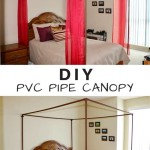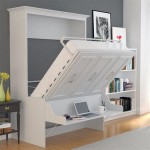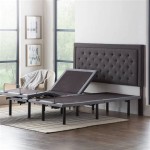## Essential Aspects of the Cost of Building a Floating Bed Determining the cost of building a floating bed is crucial to plan and budget for this home improvement project. Several key factors influence the overall expense, and understanding these essential aspects enables you to make informed decisions and estimate the project's cost accurately. This article explores the significant elements that impact the price of building a floating bed, providing valuable insights to help you approach the project confidently. ### Material Selection: The choice of materials for the bed frame and headboard plays a significant role in determining the cost. Wood, metal, and acrylic are popular options, each offering unique aesthetic qualities and price points. Solid wood, such as oak or mahogany, is generally more expensive than engineered wood or plywood. Metal frames are durable and sleek but can be pricier than wooden ones. Acrylic offers a modern touch and allows for light transmission, but it commands a premium cost. ### Bed Size and Design: The size of the bed and its design directly impact the material requirements and labor costs. Larger beds require more materials, while complex designs may involve intricate joinery or upholstery, adding to the expense. A simple platform bed is typically less expensive than a headboard and footboard design. ### Customization and Finishes: Customizing the floating bed with unique details, such as built-in storage or accent lighting, can increase the cost. The type of finish, whether paint, stain, or veneer, also affects the price. High-quality finishes, such as lacquer or polyurethane, provide durability and a polished look but come with a higher price tag. ### Labor and Installation: The complexity of the floating bed design and the level of professional assistance required influence the labor costs. If you possess carpentry skills and tools, you may opt for DIY installation to save on professional fees. However, engaging a skilled craftsman or contractor ensures proper execution and structural integrity, which may add to the overall cost. ### Additional Expenses: In addition to the primary costs mentioned above, consider potential additional expenses, such as bedding, mattresses, and under-bed storage solutions. These items complement the floating bed and enhance its functionality, but they contribute to the total project cost. ### Conclusion: Building a floating bed involves careful consideration of material selection, size and design, customization, labor, and additional expenses. Each factor significantly impacts the overall cost. By understanding these essential aspects, you can make informed decisions and create a floating bed that meets your aesthetic preferences and budgetary constraints. As you embark on this home improvement project, remember that thorough planning and thoughtful choices lead to a satisfying outcome that enhances the comfort and style of your bedroom.

Everything You Ever Wanted To Know About Floating Beds Decoholic

Mum Creates Floating Bed In Five Hours And It Cost Just 160 Metro News

How To Build A Diy Floating Bed For Queen Size Mattress Thediyplan

Diy Queen Size Floating Bed Howtospecialist How To Build Step By Plans

How To Build A Diy Floating Bed For Queen Size Mattress Thediyplan

Everything You Ever Wanted To Know About Floating Beds Decoholic

Everything You Ever Wanted To Know About Floating Beds Decoholic

Floating Low Platform Bed Frame Queen King New Picket Rail Custom Furniture Interiors

How To Build A Diy Floating Bed For Queen Size Mattress Thediyplan

Diy Floating Bed Frames How To Design Plan And Build Them From Scratch
Related Posts







